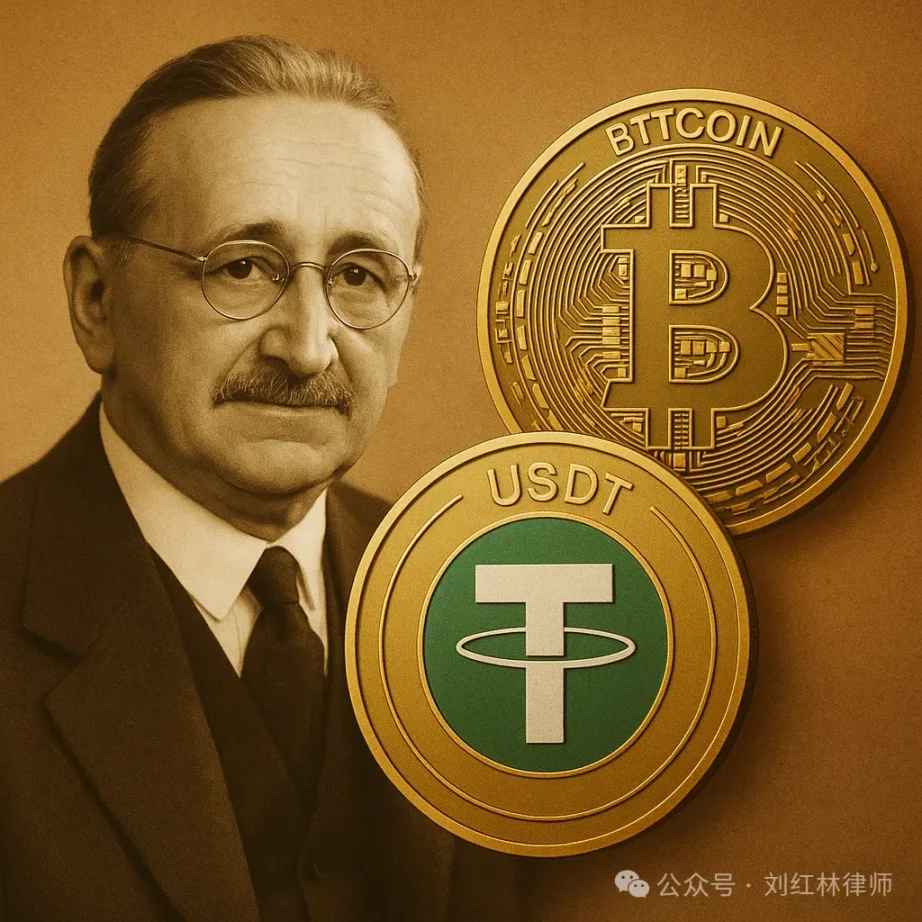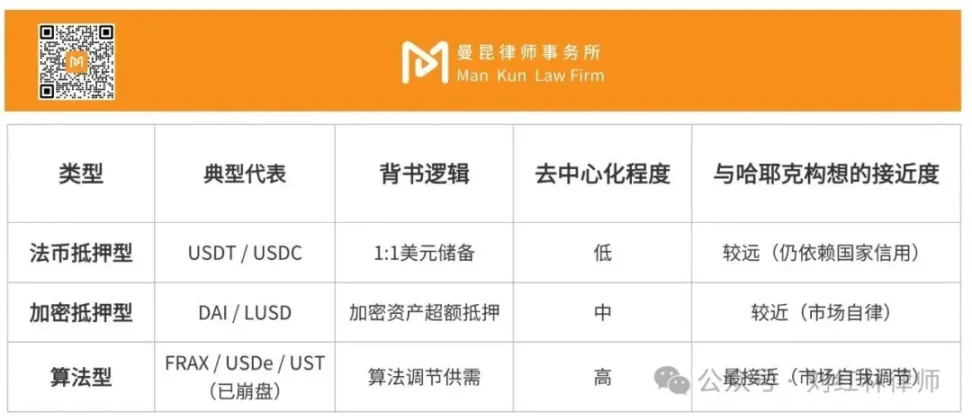Stablecoins: The Cryptographic Practice of Denationalization of Hayek’s Currency
Author: Liu Honglin
Throughout his life, Hayek maintained a wary distance from state power.
He didn't believe the state could properly manage currency, just as he didn't believe a planned economy could properly manage human freedom. In 1976, he published "The Denationalization of Money," proposing a subversive proposition: that currency should be privately issued, with the market determining its merits.
At that time, the world was still reeling from the afterglow of the Bretton Woods system. Hayek's vision of free currency competition seemed like nothing more than an academic's dream: Who would allow "private currencies" to circulate in reality?
But today, fifty years later, the stablecoins of the Web3 world are reviving this dream on-chain in an unexpected way.

Hayek: Let the money return to the market
In Hayek's view, state monopoly on currency issuance is the root cause of modern inflation and financial cycles.
The government uses inflation to dilute debt and cover up fiscal deficits, while the public bears the cost in the form of reduced wealth.
He proposed: "Let private institutions freely issue currency and let the public freely choose which currency to use."
The market will automatically punish unstable and untrustworthy currency issuers and reward stable and reliable currencies.
Just like consumers choose products.
This idea later became known as the "competitive supply theory of money."
In Hayek's imagination, currency is no longer a "sovereignty" defined by the state.
Rather, it is a kind of "contractual credit" generated by market competition.
But in the 1970s, there was no technology to support this idea.
The accounting, settlement and credit verification of currency are inseparable from centralized institutions.
It wasn’t until 2008, when Satoshi Nakamoto published the Bitcoin white paper, that Hayek’s almost forgotten book suddenly had new readers.
Bitcoin: A decentralized cryptographic practice
The invention of Bitcoin is a rebellion against monetary thinking.
It does not rely on the central bank for issuance or state endorsement, and has a fixed total amount, a public algorithm, and a transparent ledger.
This is exactly the prototype of the "denationalized currency" that Hayek wanted.
But Bitcoin also exposes the first paradox of "market currency": price stability.
Its scarcity ensures anti-inflation, but also leads to violent fluctuations——
A "free currency" that cannot become a stable payment medium will only become a speculative asset.
What Hayek wanted was stable credit, but what Bitcoin gave was market frenzy.
Thus, stablecoins emerged.
Stablecoins: A revised version of non-nationalized currencies
The emergence of stablecoins is a compromise between technology and credit.
It not only retains the openness of the decentralized system, but also introduces an anchoring mechanism to ensure price stability.
In this respect, it is closer to the "private currency" envisioned by Hayek than Bitcoin.
Based on the collateral and issuance mechanism, stablecoins can be roughly divided into three categories:
Fiat-collateralized (e.g., USDT, USDC): Tokens are issued on-chain at a 1:1 ratio, with the issuer holding an equivalent value of USD or short-term debt assets. These tokens are redeemed upon redemption. Advantages include stability and high liquidity; disadvantages include strong reliance on the banking system and regulatory arrangements, resulting in a low level of decentralization.
Crypto-collateralized (e.g., DAI, LUSD): Users over-collateralize with ETH, BTC, and other assets to mint stablecoins on-chain. Prices are maintained through a liquidation mechanism, interest rate adjustments, and oracles. Advantages include on-chain self-regulation and transparency; disadvantages include exposure to crypto asset volatility and liquidation efficiency.
Algorithmic/hybrid (such as FRAX, USDe, and the now-defunct UST): These attempt to achieve a "soft peg" through financial engineering, using supply adjustments, derivatives hedging, or partial collateralization. Their advantages are capital efficiency and increased decentralization; their disadvantages are vulnerability to extreme market conditions and the potential for a "death spiral" if not carefully designed.

From the perspective of institutional logic, these stablecoins are implementing Hayek’s core proposition:
Let currency become a product of market competition.
Institutions or communities such as Tether, Circle, and MakerDAO have in fact become "private central banks."
They issue and maintain currency stability based on algorithms, collateral, or market trust.
Users no longer choose which currency to use based on state coercion, but rather on trust and convenience.
This is exactly the "free monetary competition" scene that Hayek dreamed of.
However, the reality of stablecoins is still three ways away from the ideal of "non-nationalized currency".
Anchoring to the US dollar: the illusion of denationalization
The vast majority of stablecoins are pegged to the US dollar.
Although they are privately issued, they still operate under the US dollar system.
The essence of USDT is a shadow bank using government bonds and commercial bills to
"Digitally recreate" the credit of the US dollar on the blockchain.
This is not the denationalization of currency, but the recolonization of the dollar.
Stablecoins appear to weaken a country's monetary sovereignty, but in fact they strengthen the United States' monetary hegemony.
Hayek may not have expected that the "currency competition" he dreamed of would become the "technological extension of the US dollar" in the reality of globalization.
The resurgence of regulation: the tug-of-war between freedom and order
Hayek hoped that the money market could form its own order through competition.
But the systemic risks of the modern financial system make regulation necessary.
US SEC, FinCEN, EU MiCA, Hong Kong SFC...
They are all bringing stablecoins under licensing management in different ways.
Circle actively seeks regulatory cooperation, while MakerDAO attempts to remain "compliance neutral."
This game reflects the rebalancing of liberalism and sovereign order.
The ideal of decentralization must be implemented within the legal framework.
Even if currency is denationalized, it will eventually still have to face the reintegration of state regulation.
Algorithmic Credit: A New Form of “Trust Economy”
Hayek believed that the market would punish bad money, but the collapse of algorithmic currency shows that algorithmic credit does not automatically equal market trust.
The collapse of TerraUSD (UST) has shown people that “free currency” can also self-destruct.
Algorithms cannot replace the central bank's lender of last resort function.
The shift of credit from the state to the algorithm is simply a shift from one political belief to another.
The essence of money—an organized form of trust—has not changed.
Despite this, stablecoins have made Hayek's vision materialize on a global scale for the first time.
The “currency competition” he envisioned is now happening in the form of network protocols:
On the chain, anyone can issue, hold, and exchange their own currency;
The market chooses who to trust through price, liquidity, and transparency;
Algorithms and smart contracts assume part of the functions of the credit order.
If Bitcoin has completed the ideological enlightenment of "currency denationalization",
Then stablecoin is an institutional experiment of "non-nationalized currency".
It is not a revolution, but a reconstruction.
The state is no longer the only creator of money.
The market, technology and community all participate in the production of credit.
Hayek believed that spontaneous order was the force behind the evolution of human institutions.
And blockchain is the modern form of this power.
No central planning, no sovereign coercion,
But it can generate order through code and consensus.
The existence of stablecoins proves this.
Conclusion: The Future of Money
Hayek's complete "denationalization" may never be achieved, but the future of currency is indeed moving from "single sovereignty" to "multi-center order."
In this new system:
Sovereign currencies continue to exist and serve as the basis for finance and payments;
Stablecoins become a medium of liquidity in cross-border, on-chain economies;
Algorithmic credit, RWA collateral, and central bank digital currency (CBDC) coexist and compete;
Laws and algorithms jointly define the "trust boundaries" of currency.
This is a new monetary pluralism.
Hayek might be surprised to find that his "theory of private currency" is being reinterpreted in the 21st century in China, Hong Kong, Dubai and the Ethereum community.
It is not about complete laissez-faire, but about finding a new balance between regulation and technology.
Stablecoin is not the ultimate realization of Hayek, but it allows us to re-understand the social nature of "money":
Trust does not have to be monopolized; credit can be distributed.
In this sense, stablecoins are indeed a resurrection of Hayek.
Only this time, the resurrected soul is not in a Viennese coffee shop, but on the consensus network of the blockchain.
You May Also Like

Microsoft Corp. $MSFT blue box area offers a buying opportunity

Tension Escalates: Bitcoin Price Fluctuates as It Braces for Trade Drama
